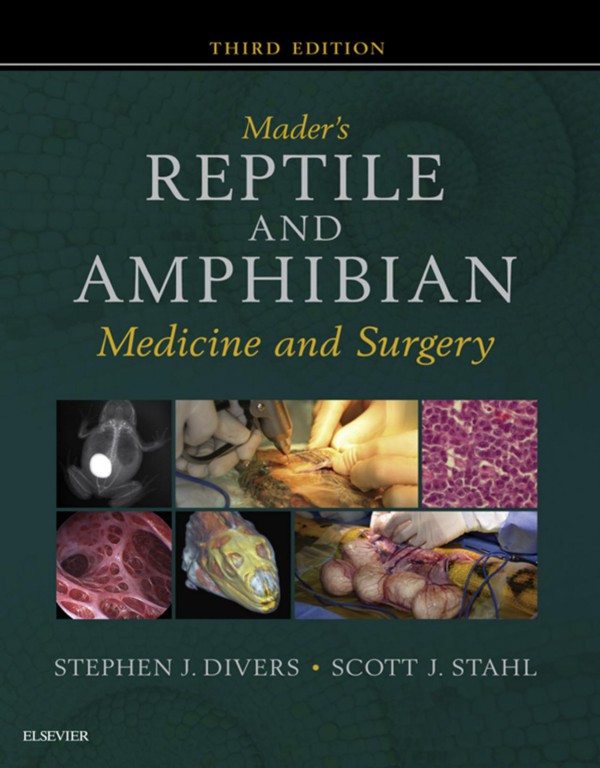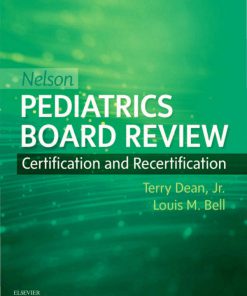Mader Reptile and Amphibian Medicine and Surgery 3rd edition by Elsevier Enhanced Digital Version 9780323636216 0323636217
$50.00 Original price was: $50.00.$25.00Current price is: $25.00.
Authors:Stephen J. Divers BVetMed DZooMed Dipl ECZM (Herpetology; Zoo Health Management) DACZM FRCVS; Scott J. Stahl DVM Dipl ABVP (Avian) , Series:Medicine [60] , Tags:Mader’s Reptile and Amphibian Medicine and Surgery; Third Edition (2019) 1793pp. 978-0-323-48253-0 , Author sort:ECZM, Stephen J. Divers BVetMed DZooMed Dipl & FRCVS, Zoo Health Management DACZM & ABVP, Scott J. Stahl DVM Dipl , Ids:9780323482530 , Published:Published:Nov 2018 , Publisher:Elsevier Inc. , Comments:Comments:Mader’s Reptile and Amphibian Medicine and Surgery, Third Edition (2019) 1793pp. 978-0-323-48253-0
Mader Reptile and Amphibian Medicine and Surgery 3rd edition by Elsevier Enhanced Digital Version – Ebook PDF Instant Download/Delivery. 9780323636216, 0323636217
Full download Mader Reptile and Amphibian Medicine and Surgery 3rd edition after payment

Product details:
ISBN 10: 0323636217
ISBN 13: 9780323636216
Author: Elsevier Enhanced Digital Version
**Selected for Doody’s Core Titles® 2024 in Veterinary Medicine** Known as “the bible” of herpetological medicine and surgery, Mader’s Reptile and Amphibian Medicine and Surgery, 3rd Edition edited by Stephen Divers and Scott Stahl provides a complete veterinary reference for reptiles and amphibians, including specific sections on practice management and development; taxonomy, anatomy, physiology, behavior, stress and welfare; captive husbandry and management including nutrition, heating and lighting; infectious diseases and laboratory sciences; clinical techniques and procedures; sedation, anesthesia and analgesia; diagnostic imaging; endoscopy; medicine; surgery; therapy; differential diagnoses by clinical signs; specific disease/condition summaries; population health and public health; and legal topics. Well-organized and concise, this new edition covers just about everything related to reptiles and amphibians by utilizing an international array of contributing authors that were selected based on their recognized specialization and expertise, bringing a truly global perspective to this essential text!
- Highly knowledgeable, well respected, recognized specialists add a global view of the subject matter.
- Details on creating, building and maintaining your herpetological veterinary practice
- The extensive biology of a wide variety of species is covered, including snakes, lizards, turtles, crocodiles, tuatara and amphibians, providing an understanding of the unique anatomy and physiology of these species, which is a vital prerequisite of medicine and surgery.
- Spellings of all North American reptiles and amphibians approved by The Committee of Standard English and Scientific Names ensures students have the most up-to-date naming conventions for these exotic species.
- Thorough coverage of taxa-specific husbandry and management practices, as well as current nutritional recommendations, advances in lighting, welfare, and behavioral training.
- Dedicated section on infectious diseases (virology, bacteriology, mycology, parasitology) and laboratory diagnostics
- Detailed, step-by-step techniques and procedures including catheters and feeding tubes, and modern recommendation on hospitalization and euthanasia.
- Completely revised chapters on sedation, general anesthesia, analgesia, local anesthesia and amphibian anesthesia
- Completely revised chapters on radiography, ultrasonography, CT, MRI, scintigraphy, diagnostic endoscopy and endosurgery
- Greatly expanded medicine section details all major areas including urology, hepatology, cardiology, dermatology, ophthalmology, gastroenterology, pulmonology, neurology, oncology, endocrinology, theriogenology, musculoskeletal, vascular/hematopoietic/immunology, behavioral medicine, nutritional diseases, perinatology, geriatrics, emergency and critical care, toxicology and amphibian medicine.
- Completely revised and expanded surgery section includes the eye, ear, rhinarium, oral cavity, integument, coeliotomy and internal viscera, cloaca, amphibian soft tissue surgery, orthopedics and amputation.
- Expanded and updated therapy section on antimicrobials, anti-virals, anti-parasiticides, anti-inflammatories, including new chapters on psychopharmacology, oncologic therapies, photobiomodulation, wound management, and rehabilitation.
- A revised list of common conditions and diseases allows busy practitioners to review the most common, clinically significant, hot topics quickly and clearly.
- Expanded section on population health includes new chapters on commercial reptile farming, large collection management, breeders/wholesalers & retail, laboratory management, conservation issues and ecosystem health.
- Updated international, European and US legislation with new chapters on forensics and jurisprudence, expert testimony and court appearances.
Mader Reptile and Amphibian Medicine and Surgery 3rd Table of contents:
Section 1: Practice Management and Development
-
Developing a Successful Herpetological Veterinary Service
- Medicine Practiced
- Approach and Attitude
-
Reference Resources for the Herpetological Clinician
- Associations and Societies
- Books
- Journals
- Online Resources
- Conferences
-
Understanding the Human-Herp Relationship
- The Human-Animal Bond
- The Pet Reptile or Amphibian
- The Commercial Animal
- Large Collections
- End-of-Life Considerations
- Compassionate Euthanasia Guidelines
- Common Concerns for the Clinician and the Client Regarding Animal Loss
-
Specialization
- Advice to Candidates Seeking Specialist Registration
- Requirements for Continuing Education in the Chosen Specialty
- Specialty Boards
- Specialty Colleges and Boards Web Pages
-
The Importance of Herpetological Publication by Clinicians and Academics
- What Is “Herpetological Literature”?
- Negative Results Don’t Exist…Only Hypotheses That Need to Be Tested
- Peer-Reviewed Herpetological Medicine Publications
- Being an Active Participant in Peer Review
-
Statistics for the Clinician Scientist
- Hypotheses
- Data
- Distribution
- Sample Size
- The P-Value
- Parametric vs. Nonparametric Statistical Tests
- Statistical Software
Section 2: Biology (Taxonomy, Anatomy, Physiology, and Behavior)
-
Chelonian Taxonomy, Anatomy, and Physiology
- Taxonomy
- Anatomy and Physiology
-
Snake Taxonomy, Anatomy, and Physiology
- Taxonomy
- Anatomy and Physiology
- Behavior
-
Lizard Taxonomy, Anatomy, and Physiology
- Taxonomy
- Anatomy and Physiology
- Behavior
- Longevity
-
Crocodilian Taxonomy, Anatomy, and Physiology
- Taxonomy
- Anatomy and Physiology
- Behavior
- Tuatara Taxonomy, Anatomy, and Physiology
- Taxonomy
- Anatomy and Physiology
- Amphibian Taxonomy, Anatomy, and Physiology
- Taxonomy
- Anatomy and Physiology
- Behavior
- Natural Behavior
- Ectothermy
- Water Conservation and Osmotic Balance
- Sensory Adaptations
- Foraging and Predation
- Sleep and Other Endogenous Rhythms
- Color Change
- Defense
- Social & Reproductive Adaptations
- Nonreproductive Social Behavior
- Behaviors Particular to Captivity
- Behavioral Training and Enrichment of Reptiles
- Enrichment
- Training
- Practical Examples of Training and Enrichment
- Stress and Welfare
- Physiology of the Stress Response
- Effects of Stress on the Various Body Systems
- When Does the Stress Response Become Nonadaptive?
- The Stress of Captivity
- How Is Stress Important to Reptile Medicine?
- Assessing Welfare Needs
- Recognizing Stress and Its Impacts on Welfare
Section 3: Husbandry and Management
- General Husbandry and Management
- Biology
- Basic Husbandry Requirements
- Environmental Lighting
- Natural Sunlight
- Electromagnetic Radiation
- Disinfection
- Techniques and Products
- Quarantine
- Disease Risk Assessment
- Quarantine Duration
- Quarantine Evaluation
People also search for Mader Reptile and Amphibian Medicine and Surgery 3rd :
mader’s reptile and amphibian medicine and surgery
mader’s reptile and amphibian medicine and surgery third edition
can a reptile be an amphibian
is reptile an amphibian
mader reptile medicine and surgery
You may also like…
eBook PDF
Gray’s Surgical Anatomy 1st edition by Elsevier Enhanced Digital Version 0702073873 9780702073878












